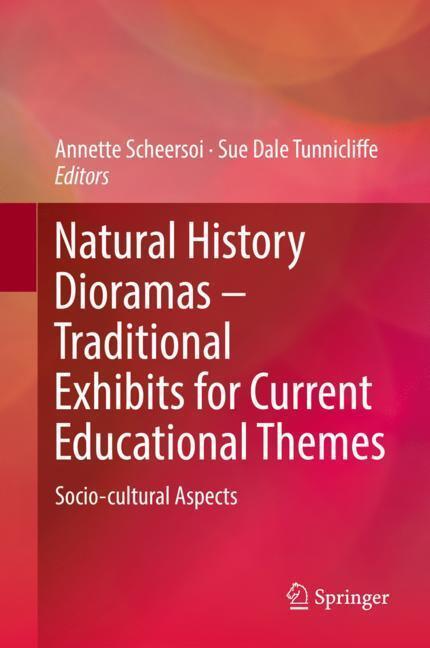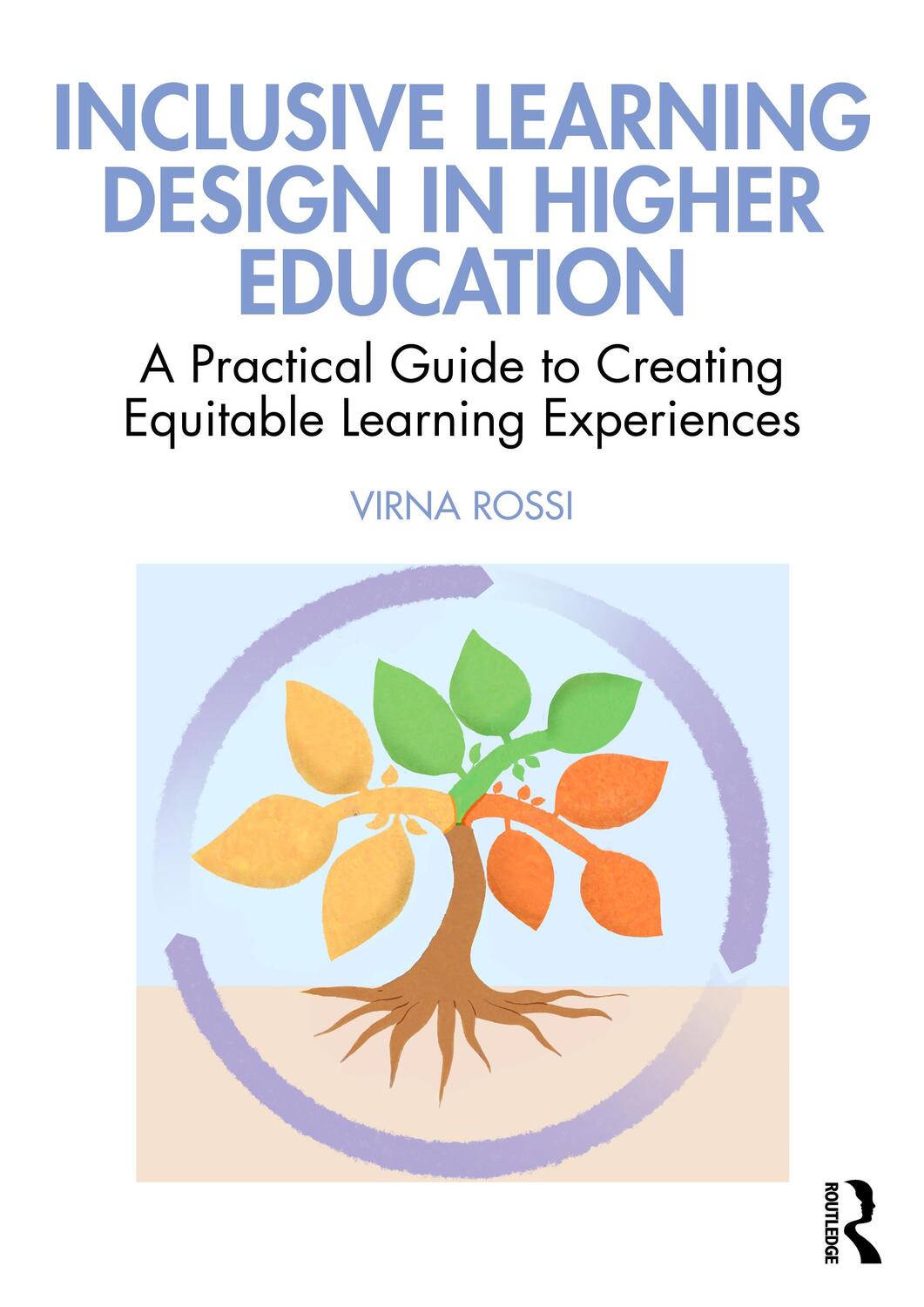106,99 €*
Versandkostenfrei per Post / DHL
Aktuell nicht verfügbar
From the early 1900s, with the passage of time and changes in cultural norms in societies, this genre of exhibits evolved in response to the changes in entertainment, expectations and expressed needs of museum visitors. The challenge has always been to provide meaningful, relevant experiences to visitors, and this is still the aim today. Dioramas are also increasingly valued as learning tools. Contributions in this book specifically focus on their educational potential. In practice, dioramas are used by a wide range of educational practitioners to assist learners in developing and understanding specific concepts, such as climate change, evolution or or conservation issues. In this learning process, dioramas not only contribute to scientific understanding and cultural awareness, but also reconnect wide audiences to the natural world and thereby contribute to the well-being of societies.
In the simultaneously published book: ¿Natural History Dioramas ¿ Traditional Exhibits for Current Educational Themes, Science Educational Aspects" the editors discuss the history of dioramas and their building and science learning aspects, as well as current developments and their place in the visitor experience.
From the early 1900s, with the passage of time and changes in cultural norms in societies, this genre of exhibits evolved in response to the changes in entertainment, expectations and expressed needs of museum visitors. The challenge has always been to provide meaningful, relevant experiences to visitors, and this is still the aim today. Dioramas are also increasingly valued as learning tools. Contributions in this book specifically focus on their educational potential. In practice, dioramas are used by a wide range of educational practitioners to assist learners in developing and understanding specific concepts, such as climate change, evolution or or conservation issues. In this learning process, dioramas not only contribute to scientific understanding and cultural awareness, but also reconnect wide audiences to the natural world and thereby contribute to the well-being of societies.
In the simultaneously published book: ¿Natural History Dioramas ¿ Traditional Exhibits for Current Educational Themes, Science Educational Aspects" the editors discuss the history of dioramas and their building and science learning aspects, as well as current developments and their place in the visitor experience.
Foreword & Introduction, Scheersoi, Annette & Tunnicliffe, Sue Dale.- Section 1. Reaching Different Types of Audiences through Dioramas.- 1) Leisure Visitors' Responses to Natural History Dioramas, Gkouskou, Eirini & Tunnicliffe, Sue Dale.- 2) Learning to Teach Newcomer Students Using Dioramas of North America, Macdonald, Maritza, Altman, Roberta & Holmes, Jay.- 3) Neitscher, Window to Nature - MuseobilBOX-Dioramas, Eva & Weon Kettenhofen, Hae-Yon.- 4) Rethinking Natural History Dioramas: Bundling the Needs of Neuro-diverse and Neurotypical Visitors, Gabriel, Paul.- 5) The Digital Diorama Project: A New Way of Exploring Dioramas from Outside of the Museum Setting, Annastella Gambini.- Section 2. Problematic Aspects of Dioramas.- 6) Life, Living and Lifelessness in Taxidermy , Meehitiya, Luanne, Sanders, Dawn & Hohenstein, Jill.- 7) Cultural Conflict: The Stories Dioramas Tell and Don't Tell, Ash, Doris.- 8) Intended and Realised Biological Themes of Dioramas - an International Comparison, Achiam, Marianne & Marandino, Martha.- Section 3. Connecting People with the Natural World through Dioramas.- 9) Promoting People's Connection with Nature through Natural History Displays, McGhie, Henry.- 10) Receiving the Message, Scheersoi, Annette & Weiser, Lara.- 11) Your Last Chance to See?, Dunmall, Keith.- 12) Teaching and Learning Biodiversity with Dioramas, Marandino, Martha, Achiam, Marianne, Bueno, Juliana & Laurini, Carolina.- Conclusion - The relevance of natural history dioramas for sociocultural issues, Reiss, Michael.
| Erscheinungsjahr: | 2018 |
|---|---|
| Fachbereich: | Erwachsenenbildung |
| Genre: | Erziehung & Bildung |
| Rubrik: | Sozialwissenschaften |
| Medium: | Buch |
| Seiten: | 224 |
| Inhalt: |
x
211 S. 53 s/w Illustr. 211 p. 53 illus. |
| ISBN-13: | 9783030002077 |
| ISBN-10: | 3030002071 |
| Sprache: | Englisch |
| Herstellernummer: | 978-3-030-00207-7 |
| Ausstattung / Beilage: | HC runder Rücken kaschiert |
| Einband: | Gebunden |
| Redaktion: |
Tunnicliffe, Sue Dale
Scheersoi, Annette |
| Herausgeber: | Annette Scheersoi/Sue Dale Tunnicliffe |
| Auflage: | 1st ed. 2019 |
| Hersteller: |
Springer International Publishing
Springer International Publishing AG |
| Maße: | 241 x 160 x 18 mm |
| Von/Mit: | Sue Dale Tunnicliffe (u. a.) |
| Erscheinungsdatum: | 14.11.2018 |
| Gewicht: | 0,506 kg |
Foreword & Introduction, Scheersoi, Annette & Tunnicliffe, Sue Dale.- Section 1. Reaching Different Types of Audiences through Dioramas.- 1) Leisure Visitors' Responses to Natural History Dioramas, Gkouskou, Eirini & Tunnicliffe, Sue Dale.- 2) Learning to Teach Newcomer Students Using Dioramas of North America, Macdonald, Maritza, Altman, Roberta & Holmes, Jay.- 3) Neitscher, Window to Nature - MuseobilBOX-Dioramas, Eva & Weon Kettenhofen, Hae-Yon.- 4) Rethinking Natural History Dioramas: Bundling the Needs of Neuro-diverse and Neurotypical Visitors, Gabriel, Paul.- 5) The Digital Diorama Project: A New Way of Exploring Dioramas from Outside of the Museum Setting, Annastella Gambini.- Section 2. Problematic Aspects of Dioramas.- 6) Life, Living and Lifelessness in Taxidermy , Meehitiya, Luanne, Sanders, Dawn & Hohenstein, Jill.- 7) Cultural Conflict: The Stories Dioramas Tell and Don't Tell, Ash, Doris.- 8) Intended and Realised Biological Themes of Dioramas - an International Comparison, Achiam, Marianne & Marandino, Martha.- Section 3. Connecting People with the Natural World through Dioramas.- 9) Promoting People's Connection with Nature through Natural History Displays, McGhie, Henry.- 10) Receiving the Message, Scheersoi, Annette & Weiser, Lara.- 11) Your Last Chance to See?, Dunmall, Keith.- 12) Teaching and Learning Biodiversity with Dioramas, Marandino, Martha, Achiam, Marianne, Bueno, Juliana & Laurini, Carolina.- Conclusion - The relevance of natural history dioramas for sociocultural issues, Reiss, Michael.
| Erscheinungsjahr: | 2018 |
|---|---|
| Fachbereich: | Erwachsenenbildung |
| Genre: | Erziehung & Bildung |
| Rubrik: | Sozialwissenschaften |
| Medium: | Buch |
| Seiten: | 224 |
| Inhalt: |
x
211 S. 53 s/w Illustr. 211 p. 53 illus. |
| ISBN-13: | 9783030002077 |
| ISBN-10: | 3030002071 |
| Sprache: | Englisch |
| Herstellernummer: | 978-3-030-00207-7 |
| Ausstattung / Beilage: | HC runder Rücken kaschiert |
| Einband: | Gebunden |
| Redaktion: |
Tunnicliffe, Sue Dale
Scheersoi, Annette |
| Herausgeber: | Annette Scheersoi/Sue Dale Tunnicliffe |
| Auflage: | 1st ed. 2019 |
| Hersteller: |
Springer International Publishing
Springer International Publishing AG |
| Maße: | 241 x 160 x 18 mm |
| Von/Mit: | Sue Dale Tunnicliffe (u. a.) |
| Erscheinungsdatum: | 14.11.2018 |
| Gewicht: | 0,506 kg |













